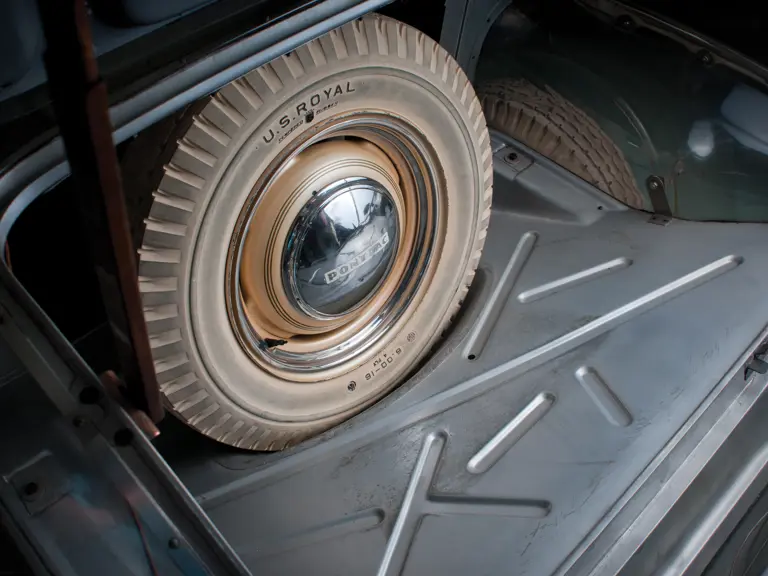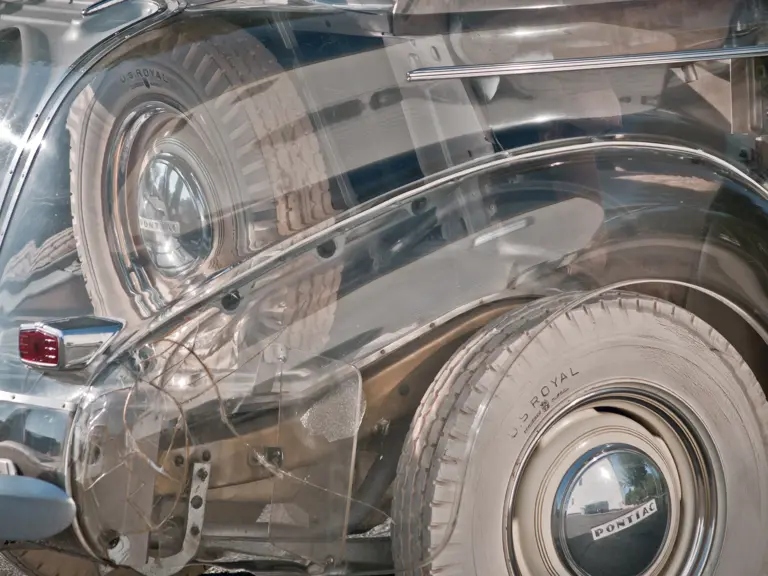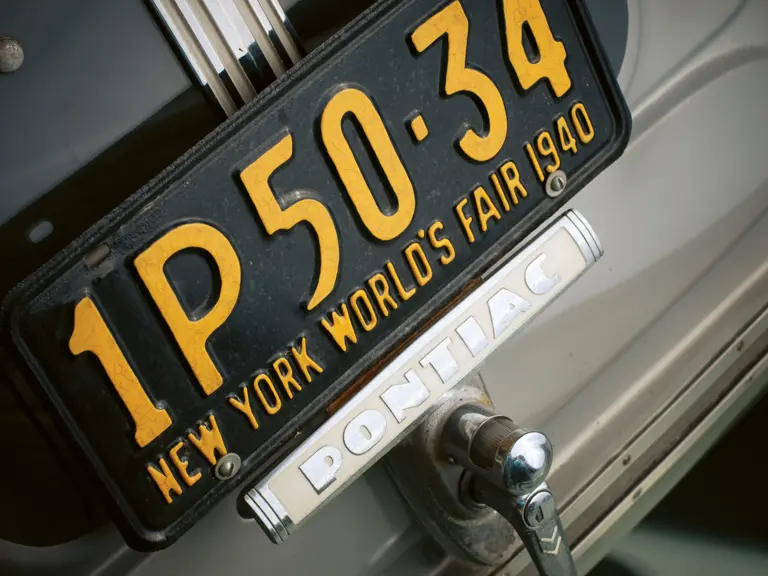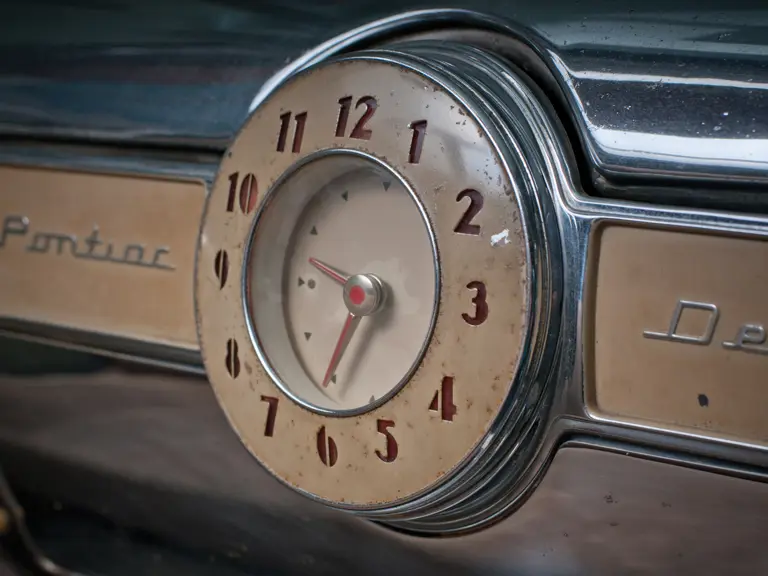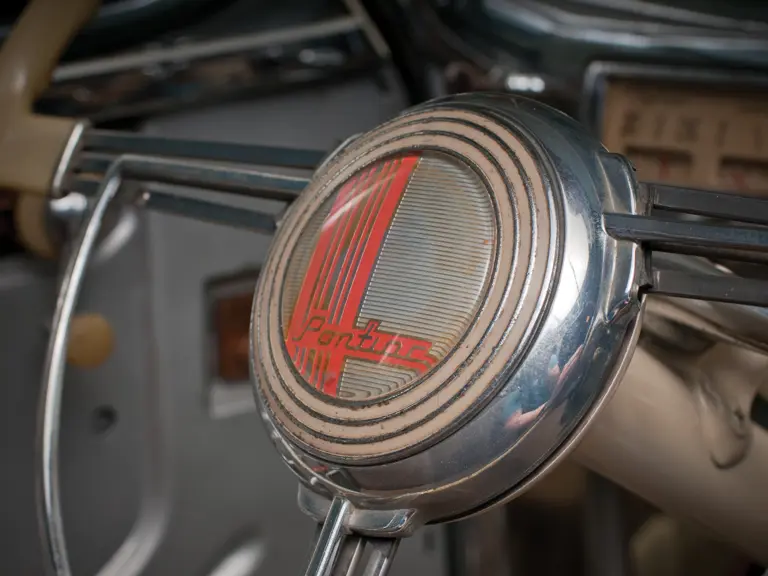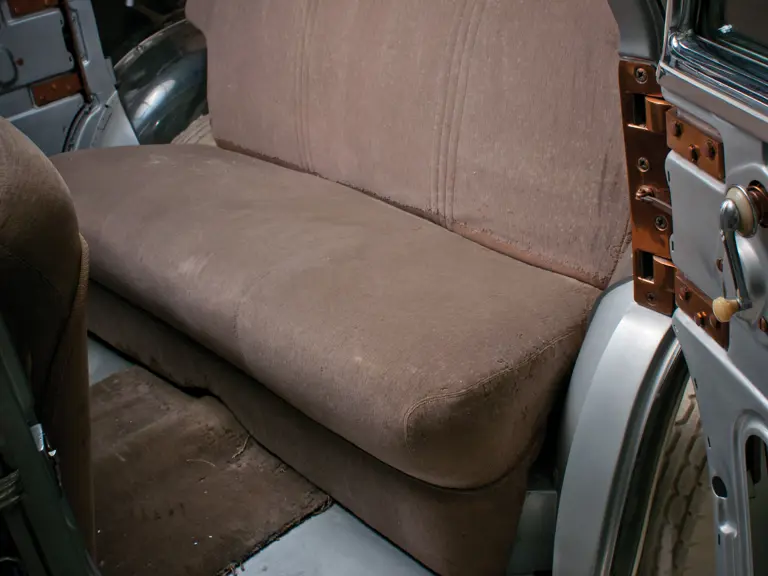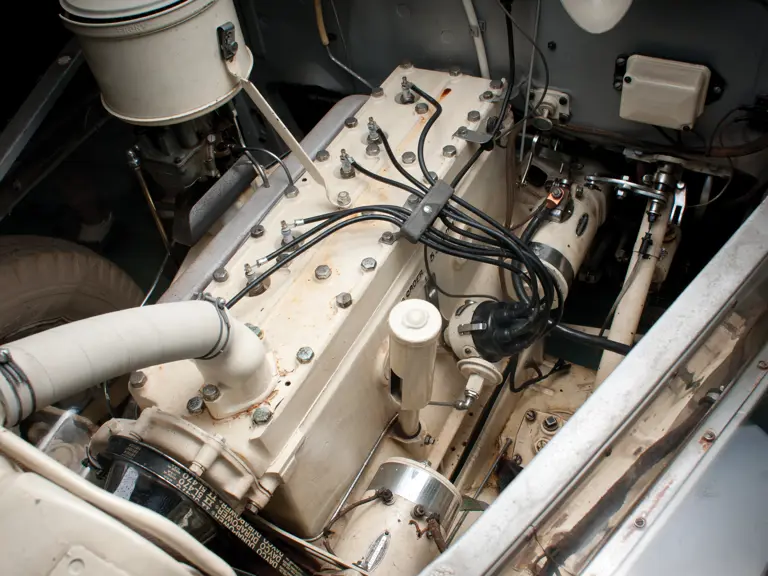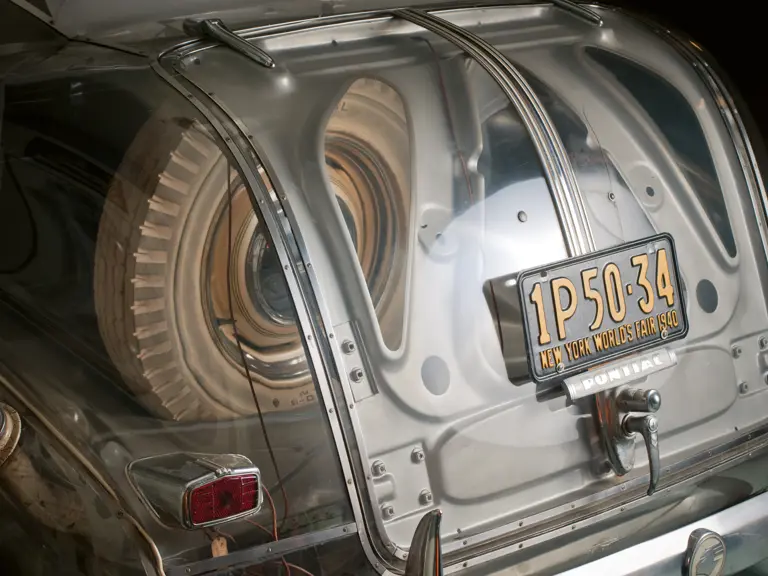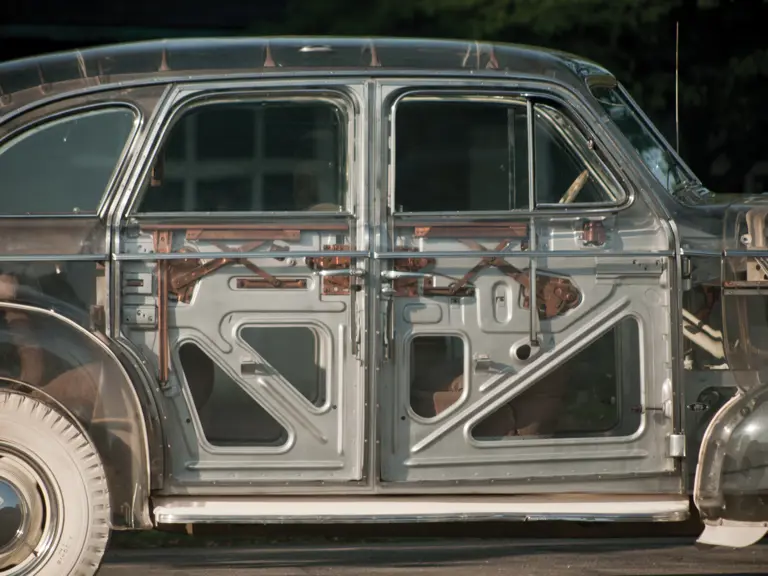Estás utilizando un navegador obsoleto. Puede que este u otros sitios no se muestren correctamente.
Debes actualizarlo o utilizar un navegador alternativo.
Debes actualizarlo o utilizar un navegador alternativo.
®⚠️☺⚡El primer coche transparente: Pontiac Deluxe Six “Ghost Car” de 1939
- Iniciador del tema cybermad
- Fecha de inicio
cybermad
Clan Leader
- Modelo
- Z3 2.8 / GR86
- Registrado
- 11 Feb 2008
- Mensajes
- 106.317
- Reacciones
- 93.702
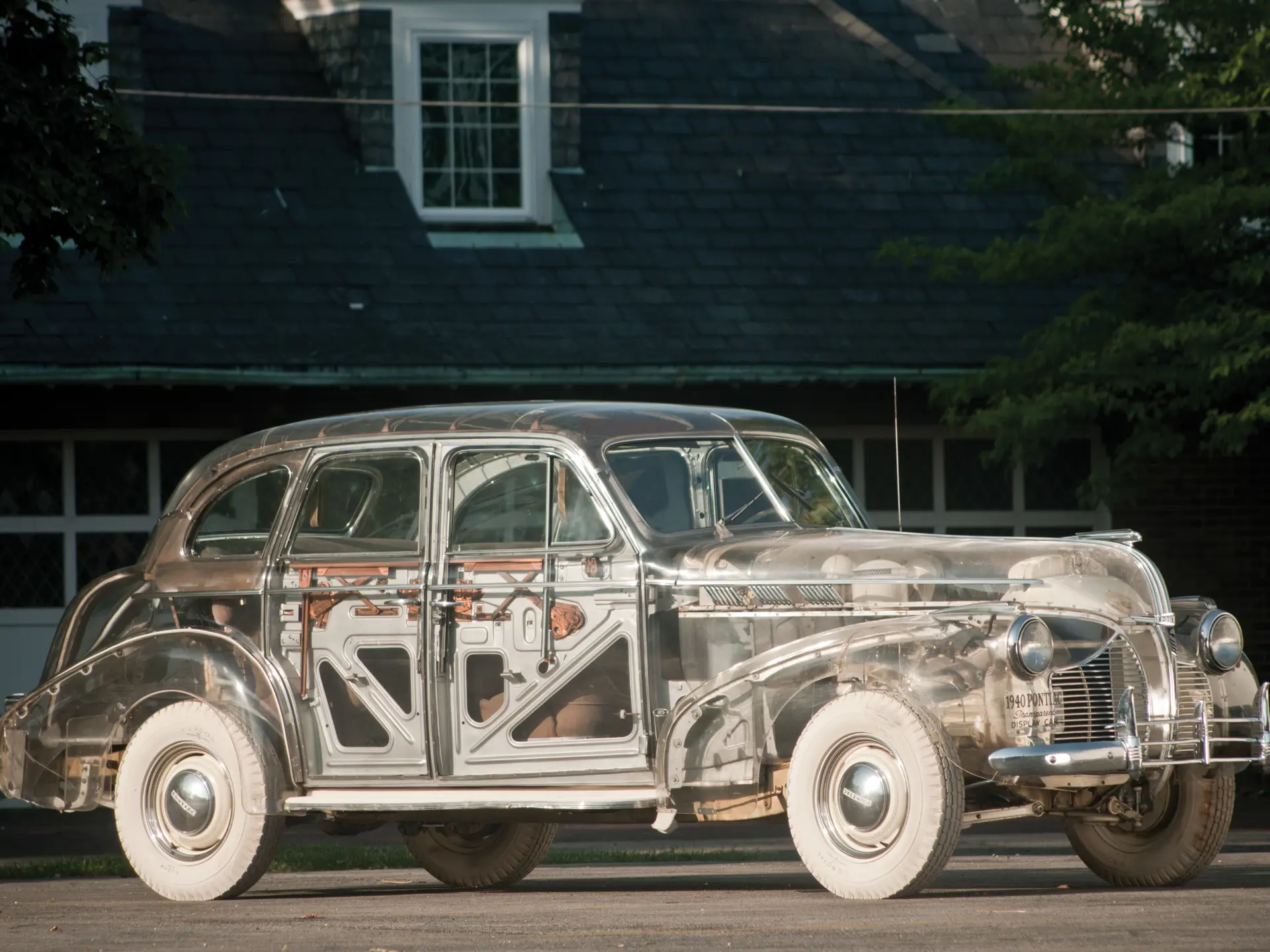
1939 Pontiac Plexiglas Deluxe Six
1939 Pontiac Plexiglas Deluxe Six "Ghost Car" for sale at RM Sotheby's St. John's
rmsothebys.com
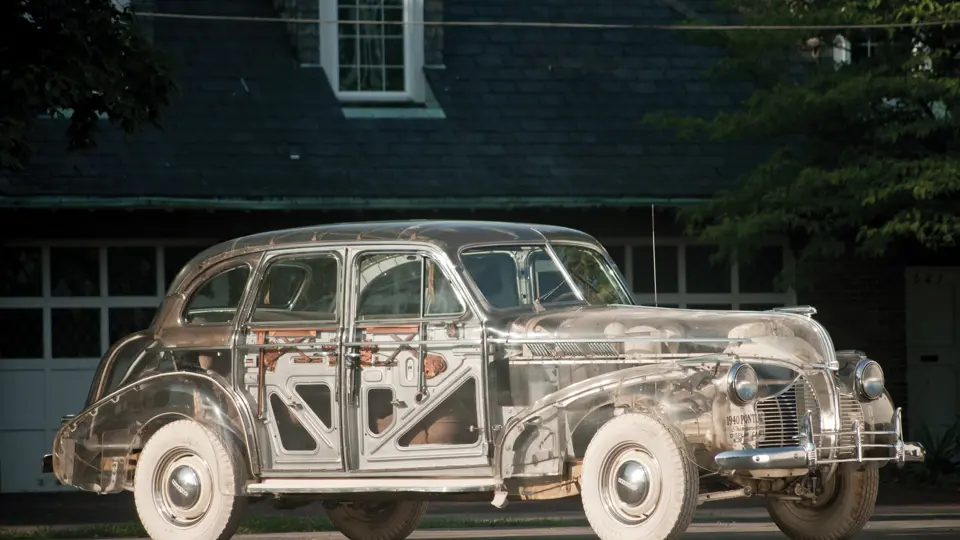
Chassis No.
3113436
Location
| Plymouth, Michigan
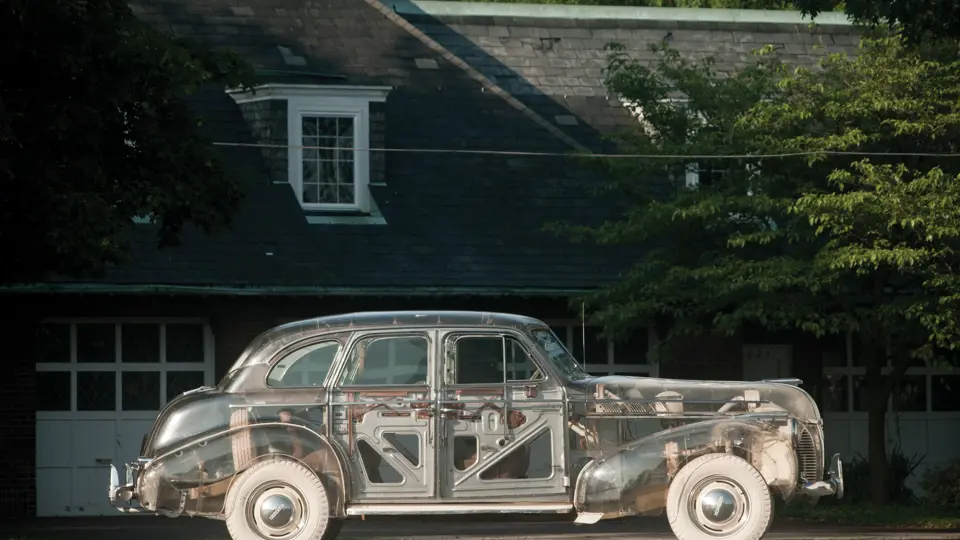
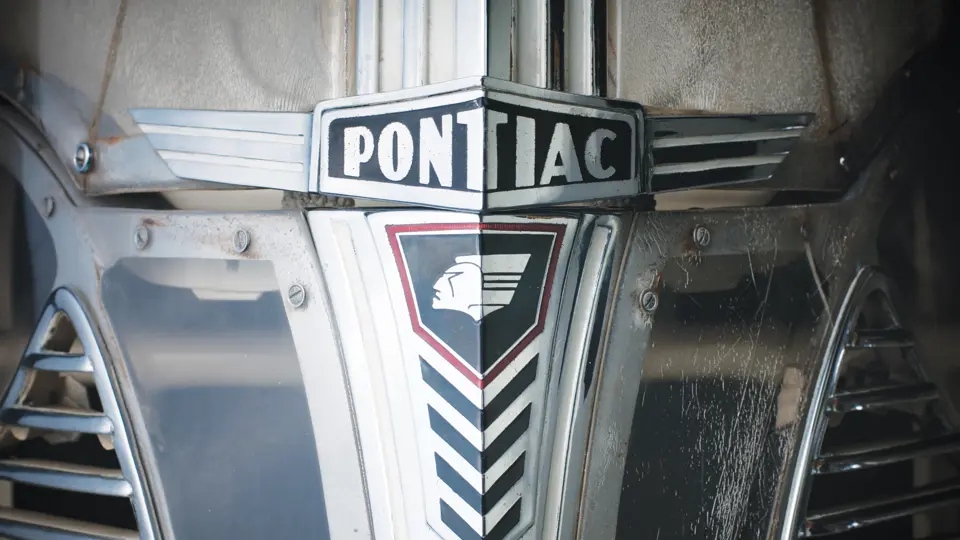
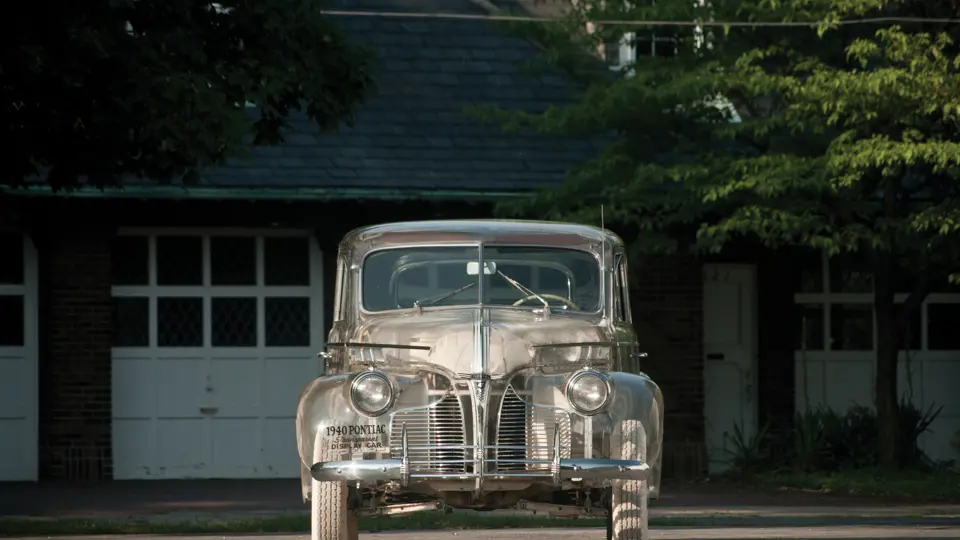
1939 Pontiac Plexiglas Deluxe Six "Ghost Car"
$308,000 USD | SoldSt. John's 2011, Lot 156
Addendum
Sold on Bill of Sale
Series 26. 85 bhp, 222.7 cu. in. L-head six-cylinder engine, three-speed manual transmission, coil spring independent front suspension, live rear axle with semi-elliptic leaf springs, and four-wheel hydraulic drum brakes.
- Highlight of 1939-40 New York World’s Fair
- First transparent car built in America
- Pioneering Plexiglas collaboration between GM and Rohm & Haas
- Excellent original condition
- Single-family ownership since early 1980s
Visitors to General Motors’ “Highways and Horizons” pavilion at the 1939-40 New York World’s Fair came away awed by a vision of the future. The work of renowned designer Norman Bel Geddes, GM’s “Futurama” exhibit foretold the communities and transportation systems of 1960, many of which came to pass. Other peeks at the future included “Previews of Progress,” inventions that seemed like magic: “Yarns made of Milk! Glass that bends! The Frig-O-Therm that cooks and freezes at the same time! The Talking Flashlight transmitting speech over a light beam!” exclaimed the exhibit’s guidebook. Sharing top billing with the Futurama and Previews of Progress, however, was the “Glass’ Car – The first full-sized transparent car ever made in America.”
On the chassis of a 1939 Pontiac Deluxe Six, GM collaborated with Rohm & Haas, the chemical company that had recently developed Plexiglas. The world’s first transparent acrylic sheet product, Plexiglas was a serendipitous discovery arising from Rohm & Haas’ work with laminated safety glass. Using drawings for the Pontiac four-door Touring Sedan, Rohm & Haas constructed an exact replica body using Plexiglas in place of the outer sheet-metal. The structural metal underneath was given a copper wash, and all hardware, including the dashboard, was chrome plated. Rubber moldings were made in white, as were the car’s tires. It reportedly cost $25,000 to build – an astronomical figure in those days.
Plexiglas went on to important military uses – bomber noses, canopies and gun turrets – in World War II, where its strength and transparency contributed mightily to the war effort. After the war, Rohm & Haas developed countless civilian applications, in signs, lighting fixtures, railroad cars and automobiles. With the capability of being molded into virtually any shape and new dyes that allow unlimited color selection, it remains an important commercial and military material.
According to the GM Heritage Center, a second car, on a Torpedo Eight chassis, was hurriedly constructed for the 1940 Golden Gate Exposition on Treasure Island, a man-made island in San Francisco Bay. Once their respective showcases had closed, both “Plexiglas Pontiacs,” or “Ghost Cars” as they were sometimes known, toured the nation’s dealerships. The 1939-40 Deluxe Six is the only one known to survive.
Following the dealership tour, it went on display at the Smithsonian Institution in Washington, D.C. and was reportedly there until 1947. It was later owned by a succession of Pennsylvania Pontiac dealers. It appeared at the first annual meet of the new Pontiac-Oakland Club International in 1973 and was purchased by Don Barlup of New Cumberland, Pennsylvania. Barlup commissioned a partial restoration from S&H Pontiac of Harrisburg and sold it to collector Leo Gephart in 1979. The current owner’s father purchased it from Gephart in the early 1980s, and it has remained in the same family ever since.
The car is in a remarkable state of preservation, a testament to the longevity of Plexiglas in an era when automotive plastics tended to self-destruct within a few years. Although it has acquired a few chips and cracks, it is structurally sound and cosmetically clear, showing off the Ghost Car’s innards as it did in 1939. The car rides on its original U.S. Royal all-white tires and sports the correct white rubber running boards. From the beginning it was a running car, although extensive use would have been unduly detrimental. The odometer currently reads 86 miles. The only recent mechanical work has been replacement of the fuel lines.
Not surprisingly, it has no conventional vehicle identification number; even the machined boss for the engine number is blank. The identification number traditionally used for the car is 3113436, probably a part number, found on the radiator. A collection of period photos and other memorabilia accompanies the car, which still turns heads as much as it ever did. It is not, obviously, suited for touring, but as a unique artifact from automotive and cultural history, it deserves a wider audience. It will certainly be welcome at all manner of shows and concours, as well as being suited for a singular museum display. It is no longer the only see-through automobile, but surely the first full-sized transparent car ever made in America has a unique spot in history.

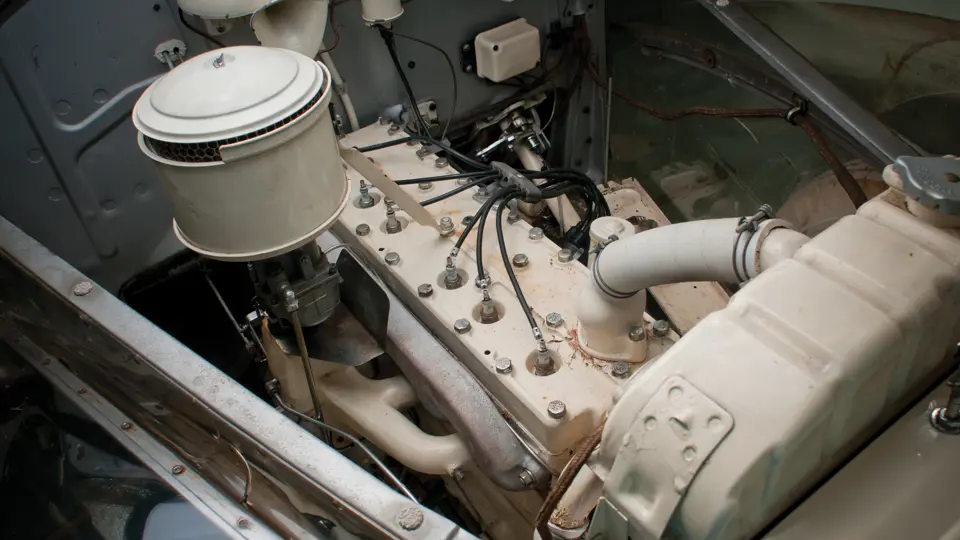

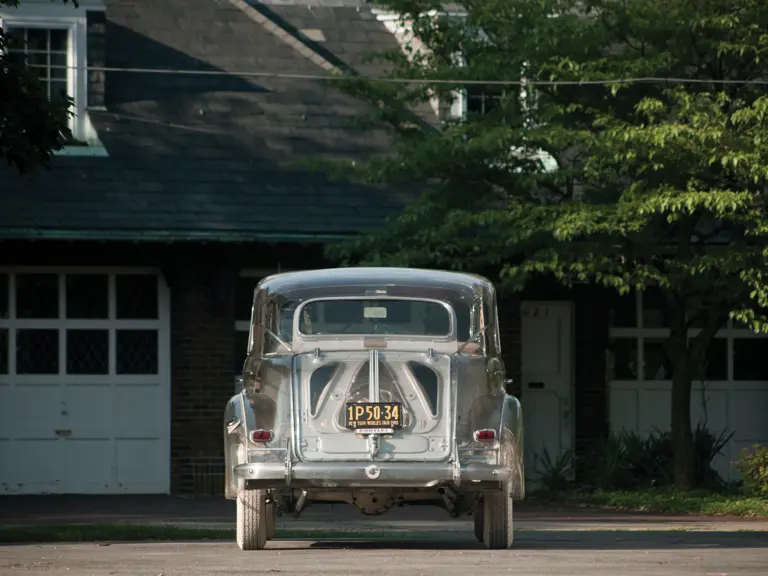
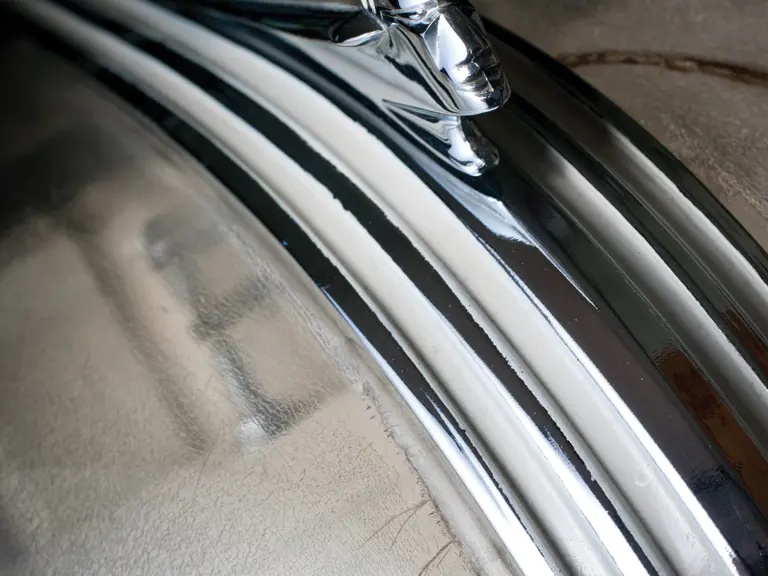
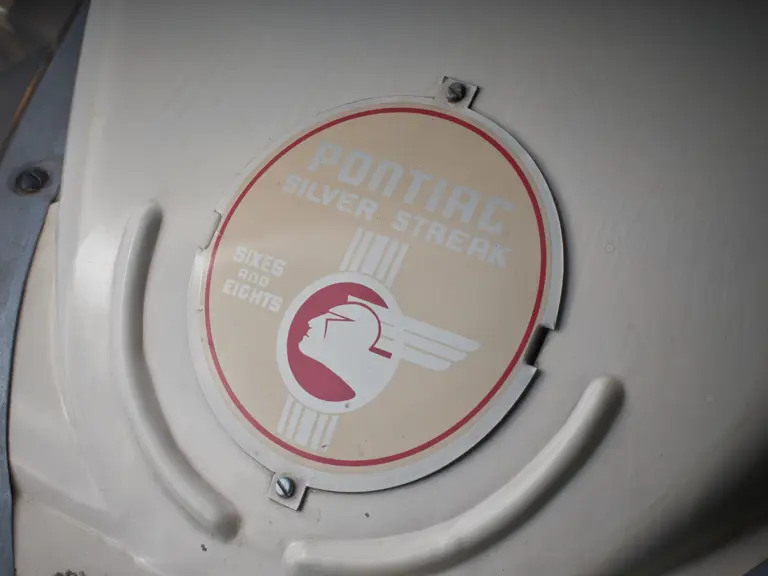
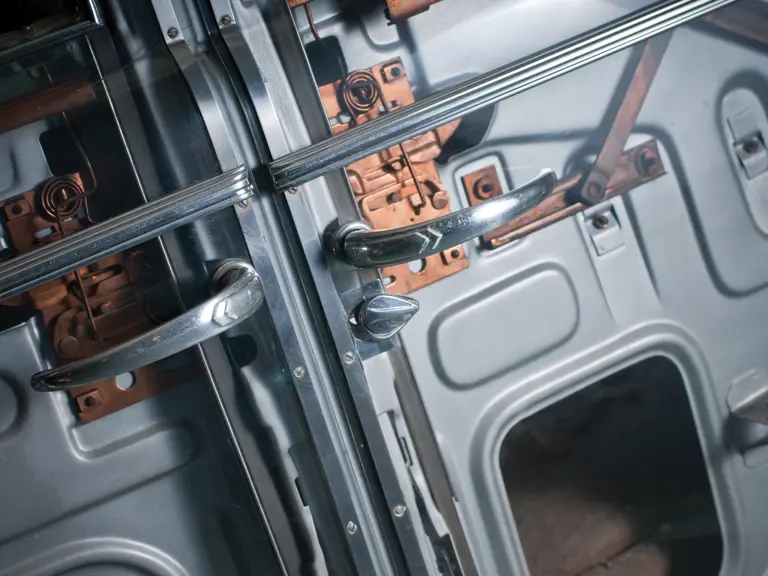
cybermad
Clan Leader
- Modelo
- Z3 2.8 / GR86
- Registrado
- 11 Feb 2008
- Mensajes
- 106.317
- Reacciones
- 93.702
Ni un render, ni una maqueta: este Pontiac Ghost es el coche transparente con el que General Motors se adelantó al futuro hace más de 80 años
• Se presentó en la Feria Mundial de Nueva York en 1939 • Estaba hecho de plexiglás, entonces un material futurista • Fue el primer coche transparente funcional a tamaño real
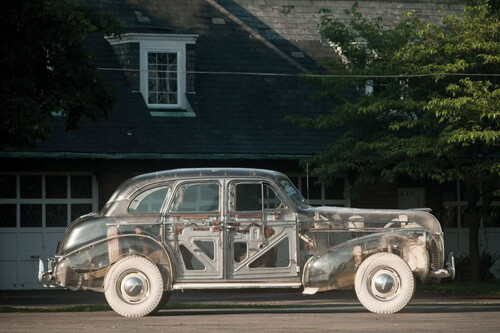
Para la Feria Mundial de Nueva York de 1939, General Motors tenía un objetivo muy claro: mostrar al mundo cómo sería el futuro. Y lo consiguió con una de las ideas más locas de la historia del automóvil. Bajo la marca Pontiac, la compañía presentó el primer coche transparente fabricado en EEUU: el Pontiac Deluxe Six “Ghost Car”.
Construido sobre el chasis de un Pontiac Deluxe Six, este sedán de cuatro puertas fue transformado gracias a una colaboración pionera entre GM y la empresa química Rohm & Haas, que acaba de crear un nuevo material entonces revolucionario: el plexiglás (polimetacrilato de metilo). Desde fuera, este material acrílico transparente dejaba ver cada pieza, cada tornillo del coche.
Cuando GM hizo invisible un coche para que todo el mundo lo mirara
Como sucede con la gran mayoría de prototipos, el Ghost Car fue concebido como un escaparate ambulante de la tecnología del momento. Formó parte de la exposición ‘Highways and Horizons’, un pabellón futurista donde GM imaginaba cómo serían las ciudades, las autopistas y el transporte de la década de 1960.El coche transparente, además, compartía espacio con otros “avances del progreso” tan llamativos como neveras que cocinaban y congelaban a la vez, o linternas que “tenían voz”. Pero el Pontiac de plexiglás eclipsaba todo lo demás. Y no era para menos: su fabricación costó 25.000 dólares en 1939, más o menos el equivalente a más de medio millón de dólares actuales o unos 425.00 euros aproximadamente.
A pesar de ser totalmente funcional, con su motor de seis cilindros en línea, cambio manual de tres marchas, suspensión independiente y frenos de tambor, el Ghost Car no estaba destinado a circular por las carreteras. Era una pieza de ingeniería y marketing, un espectáculo rodante pensado para fascinar.
Un coche sin secretos… ni pintura, ni chapa

Más allá de su carrocería acrílica, el Pontiac Ghost cuidaba cada detalle para que el conjunto resultara visualmente impactante. El chasis se pintó en color cobre, el salpicadero se cromó, y los neumáticos eran completamente blancos, suministrados por US Royal. Incluso las juntas de goma y los estribos eran blancos, para no romper la estética translúcida y con cierto aire fantasmagórico.
Curiosamente, el volante no era transparente (como sí se vería después en prototipos como el Delahaye 135M cabriolet de Guilloré en 1949), sino que era de un marfil opaco probablemente fabricado en catalina, un derivado de la baquelita. Detalles que, lejos de restarle coherencia, reforzaban el carácter experimental del coche.

Tras su éxito en la exposición, el Ghost Car recorrió concesionarios Pontiac de todo EEUU, fue expuesto en el Instituto Smithsonian de Washington D.C. y pasó por manos de varios coleccionistas. Según documentó el GM Heritage Center, incluso se construyó una segunda unidad en 1940 sobre un chasis Torpedo Eight para la Exposición Golden Gate en San Francisco, aunque su paradero hoy es incierto.
La unidad original sobrevivió. Tras décadas en manos privadas (lo conservó una sola familia desde los años 80), el coche fue subastado por RM Sotheby’s en 2011 por 308.000 dólares o poco más de 262.000 euros, con solo 135 km en el odómetro. Lo extraordinario es que, pese a tener entonces 72 años, el Pontiac Ghost seguía en un buen estado general, con el plexiglás original sólido.

Un testimonio duradero no solo del material, sino también de una época en la que el automóvil empezaba a ser mucho más que una máquina: se convertía en símbolo de modernidad, de diseño y de futuro. Aunque el Pontiac Ghost nunca saliera a la venta, cumplió su misión: demostrar que el futuro se podía construir con imaginación, un poco de ciencia… y plexiglás.

Ni un render, ni una maqueta: este Pontiac Ghost es el coche transparente con el que General Motors se adelantó al futuro hace más de 80 años
Para la Feria Mundial de Nueva York de 1939, General Motors tenía un objetivo muy claro: mostrar al mundo cómo sería el futuro. Y lo consiguió con una de las...
Alberto(Lagu)
Clan Leader
- Registrado
- 4 Jul 2006
- Mensajes
- 40.538
- Reacciones
- 6.068
Precioso por la reliquia que es.
Similar threads
- Respuestas
- 1
- Visitas
- 378
- Respuestas
- 9
- Visitas
- 928
- Respuestas
- 0
- Visitas
- 239

